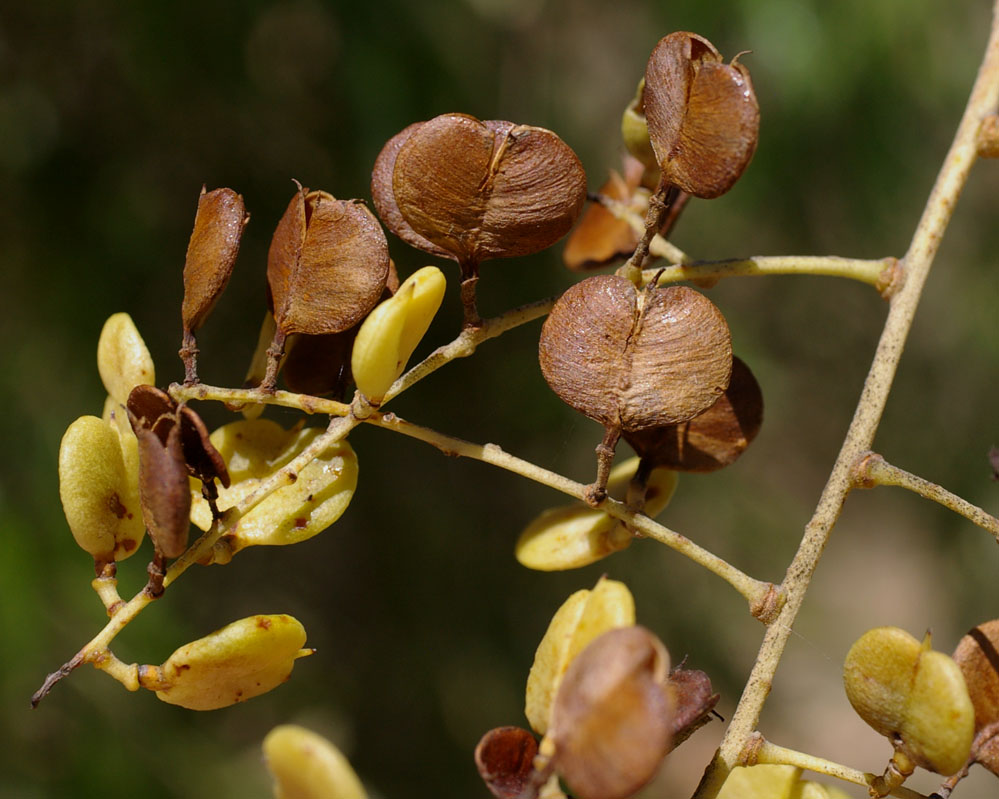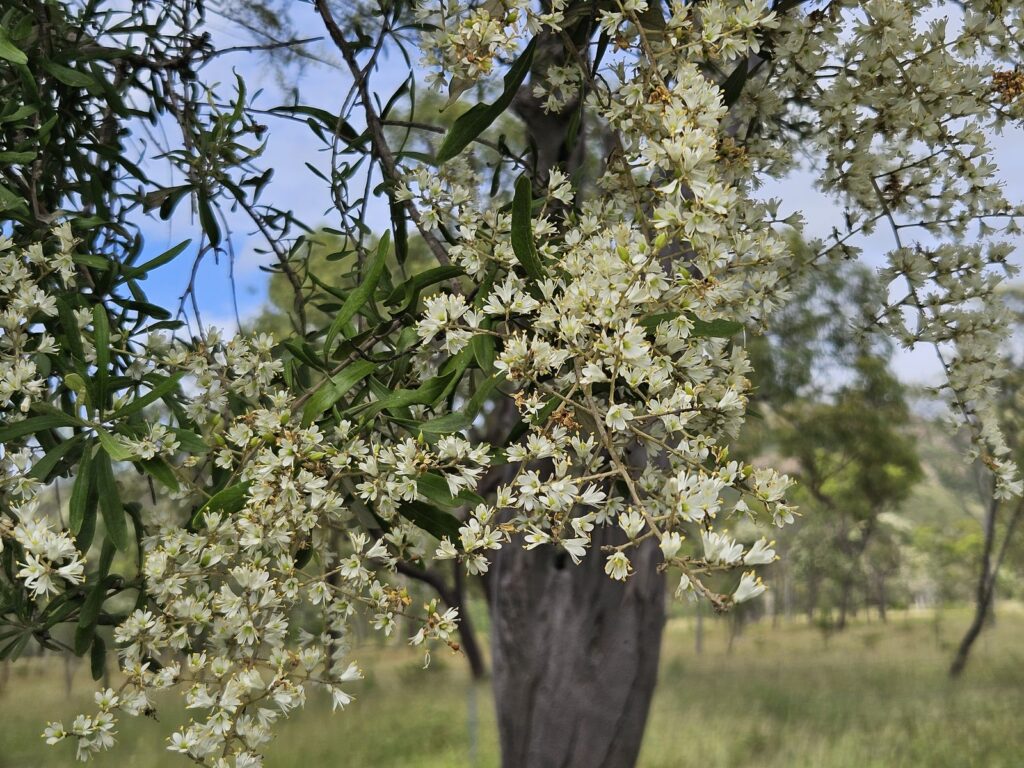
On our March outing we drove from Mingela to Fanning River, en route finding numerous Bursaria incana in full flower. Close up, their dense clusters of small flowers (photo above) are sweetly scented. In the middle and far distance their snowy canopies stand out while flowering (photo below) although at other times Bursaria incana is fairly inconspicious.
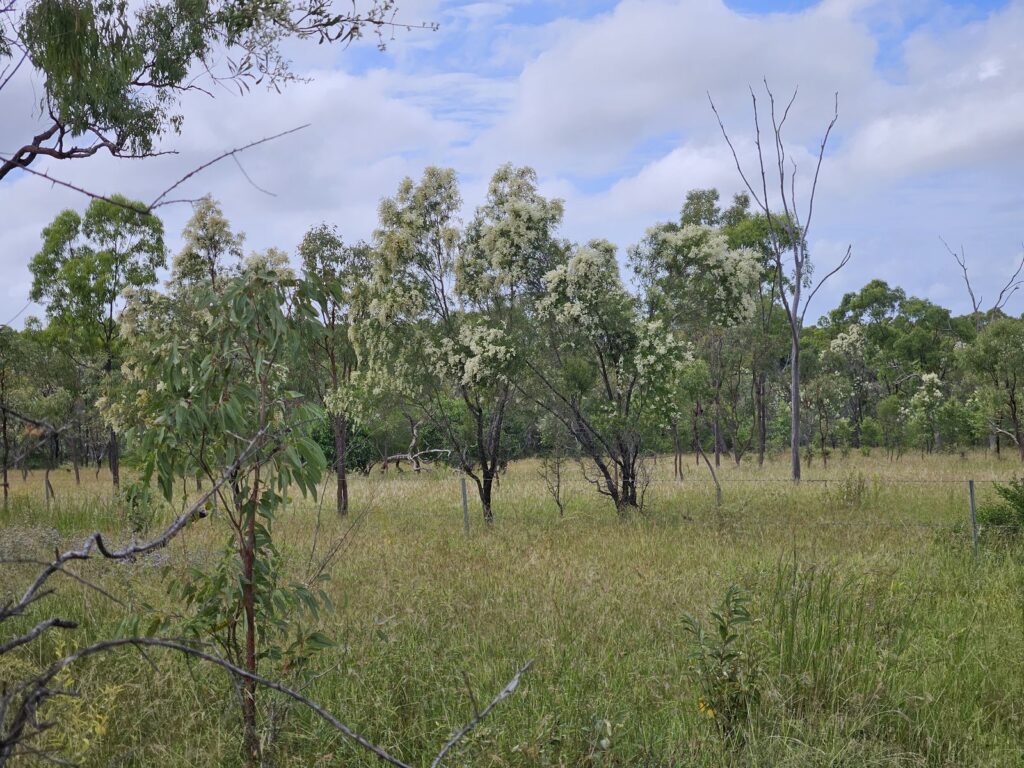
Bursaria incana (Pittosporaceae) is one of only 8 species in the genus Bursaria, all of them endemic to Australia. Bursaria incana grows naturally across a wide range in Queensland and the Northern Territory, usually in open forest and sometimes in monsoon forest and vine thickets.
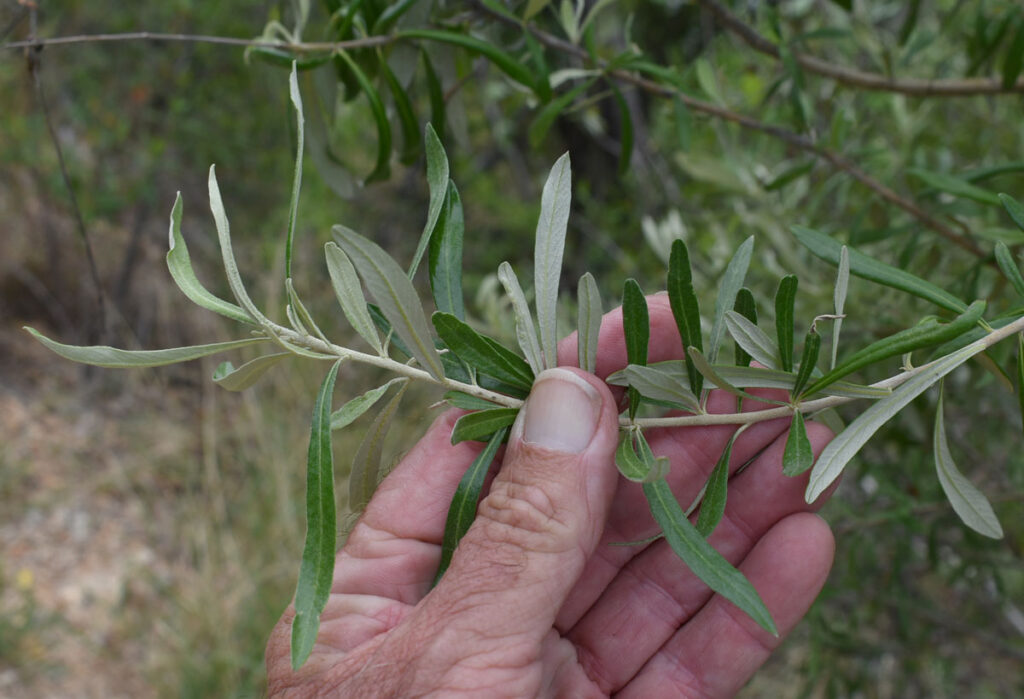
The foliage is helpful for identifying Bursaria incana when not in flower. The leaves (photo above) appear to be arranged in alternate clumps along the twigs and the leaf blades have pale-coloured undersides covered in fine matted hairs. Seedlings and young Bursaria incana plants have tiny sharp spines in the leaf axils (approach with care!) but the spines are lost as the plant matures.
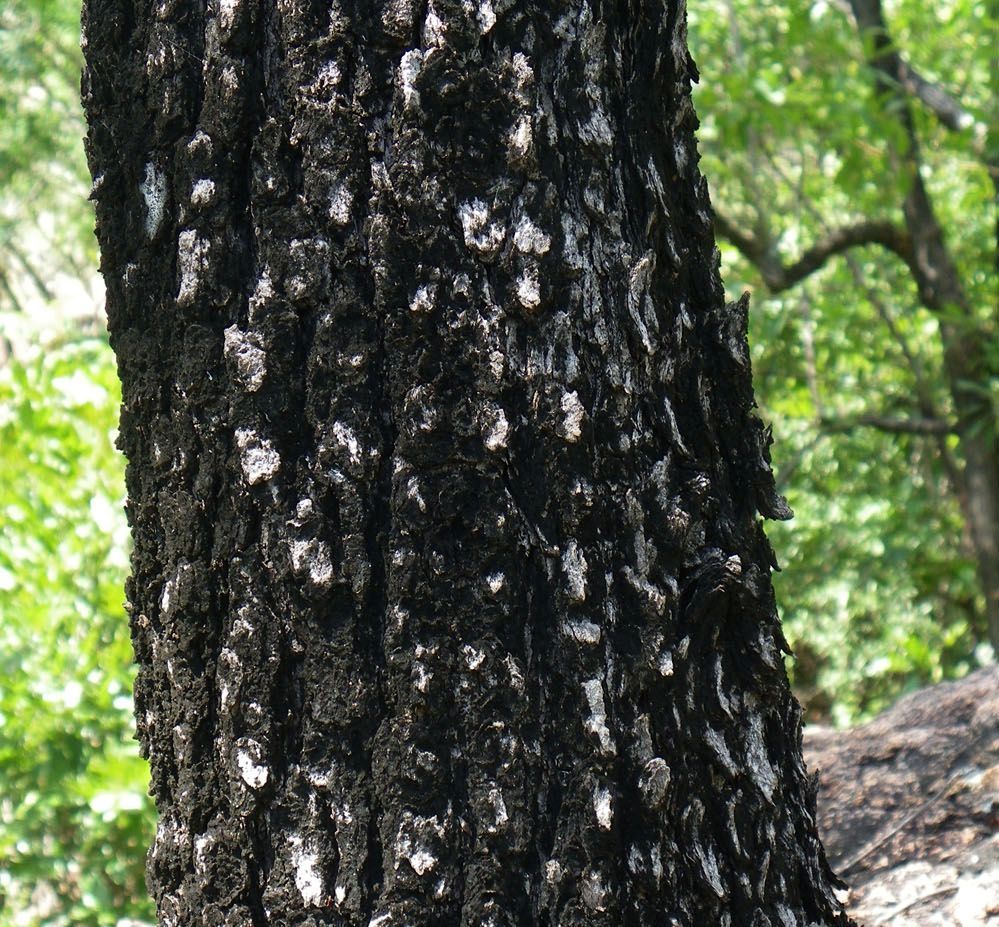
In young specimens the bark is pale grey and fairly smooth but older Bursaria incana develop rough, dark grey bark (photo above).

The flowers (seen close-up above) produce distinctive flattened, purse-shaped capsules (photo below) that gradually change from pale green to brown as they mature. Inside these capsules are flat brown seeds that usually germinate fairly easily.
